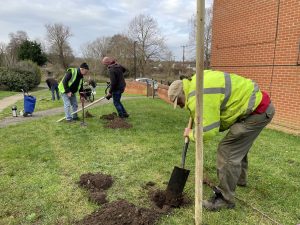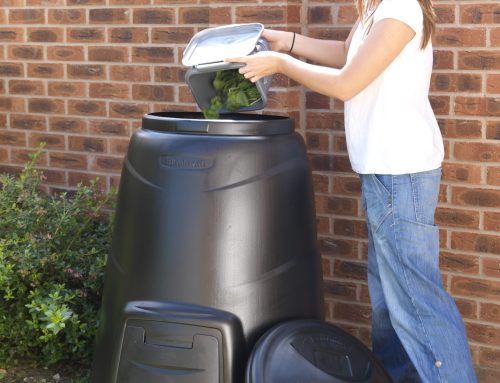 1,877 new trees are being planted across the county by Suffolk’s councils, with a focus on re-establishing orchards.
1,877 new trees are being planted across the county by Suffolk’s councils, with a focus on re-establishing orchards.
Suffolk County Council has secured funding of £201,213 from the government’s Local Authority Treescapes Fund on behalf of Babergh District Council, East Suffolk Council, Mid Suffolk District Council, Ipswich Borough Council and West Suffolk Council.
The funding will go towards the planting of the trees, many of which are ‘standards’ around six feet in height when planted. The funding also covers three years of maintenance to help the trees become established.
The Fund aims to restore tree cover in non-woodland areas which may have been impacted by issues such as disease, habitat degradation or ageing tree stock. Many of the proposed projects will involve their local community and pupils from local schools.
Councillor Richard Rout, Suffolk County Council’s Deputy Leader and Cabinet Member for Finance and Environment, said:
“We have now made three successful bids to the Local Authority Treescapes Fund on behalf of local councils, bringing in around half a million pounds to plant and maintain 7,604 trees in recent years.
“We are re-introducing tree cover where it has been lost. Successful tree-planting doesn’t have to cover many acres of land – small residential plantings can have an equally significant impact on local residents and wildlife.
“Access to a green space helps improve our health and wellbeing, and can be havens for insects and support wildlife. It’s crucial that we continue to protect and enhance our local environment, and help reverse the decline in Suffolk’s biodiversity.”
Creating more orchards is one of the themes across the planting projects. Nationally, there has been a decline in the number of orchards because of commercial pressures and increased imports.
This loss of orchards has impacts on the species they support, with less blossom and fruit for food, and less shelter and shading. It also means we are losing some of our heritage varieties and reducing genetic diversity.
One example of this is the creation of a community orchard in Woods Meadow Country Park, near Lowestoft. Local varieties of apple, plum, gage and cherry trees will be sourced from the Suffolk & Apples & Orchards Project. The trees will be cared for by wardens, the Woods Meadow volunteer group, the local primary school and local residents. The fruit will be available for the local visitors to the park to pick and eat, but also a good source of food for birds and wildlife.
Partner comments:
Councillor Daniel Potter, Cabinet Member for Environment at Babergh District Council, said:
“We are working hard to increase tree coverage on council land wherever we can to help improve local biodiversity and tackle climate change.
“This most recent Forestry Commission funding has seen us plant several fruit trees in Hadleigh – helping to establish a green corridor alongside the footpath between Aldham Mill Hill and Bradfield Avenue.
“Not only will residents be able to pick the fruit and enjoy the wellbeing benefits trees can bring, but our wildlife will benefit from new habitat too.”
Councillor Rachel Smith-Lyte, East Suffolk Council’s Cabinet Member for the Environment said:
“Increased tree planting is a key aspect of our commitment to restoring ecosystems and improving biodiversity across the district. It is essential that as well as protecting and maintaining our existing woodlands, we continue to support new planting projects such as the community orchard recently planted by local children and volunteers at Woods Meadow Country Park as these have innumerable benefits for nature and for the wellbeing of local communities. I am especially glad to see aftercare accounted for as all too often in the race to plant more trees this aspect gets neglected. Not every tree planted will survive but this way there is a much higher chance of them doing so in the climate and ecology emergency.”
Councillor Philip Smart, Ipswich Borough Council’s portfolio holder for Environment and Climate Change, said:
“We’re very pleased to be collaborating on this important project to increase the tree cover across Suffolk. With support from our volunteer tree wardens, local schools and local residents, we aim to plant community orchards at sites that will enhance the local environment, benefit our communities across Ipswich, and bring back wildlife habitats.”
Councillor Tim Weller, Cabinet Member for Environment, Culture, and Wellbeing at Mid Suffolk District Council, said:
“Increasing tree coverage in Mid Suffolk is key in tackling climate change and biodiversity loss locally.
“This funding has enabled us to plant over 30 new fruit trees in open community spaces in Stowmarket, thanks to the help of local organisations and volunteers.
“Not only will the trees provide important habitat for wildlife and wellbeing benefits, but local residents will also be able to pick the fresh fruit to take home too.”
Councillor Ian Shipp, West Suffolk Council’s Cabinet Member for Leisure, said:
“As a council, we are always looking to do more as part of our wider work supporting biodiversity and environmental resilience.
“This funding has allowed us to continue our efforts to increase tree coverage, and has resulted in 104 trees being planted across the West Suffolk region.
“Planting more trees not only enriches our surroundings with natural beauty, but it also breathes life into our communities, offering cleaner air, shade from the sun as well as creating habitats for wildlife.”






